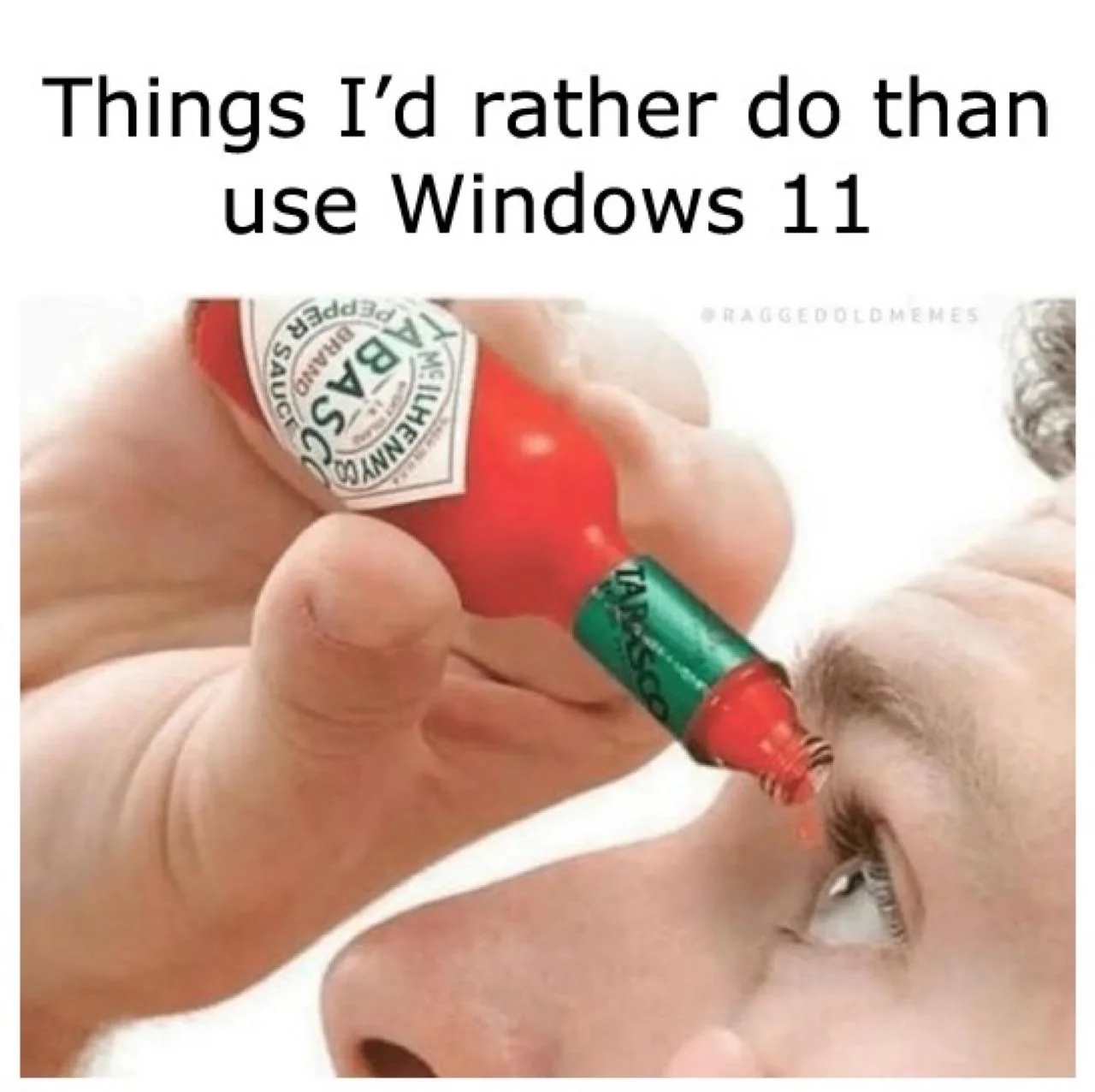this post was submitted on 03 Mar 2024
901 points (89.3% liked)
linuxmemes
20880 readers
3 users here now
I use Arch btw
Sister communities:
- LemmyMemes: Memes
- LemmyShitpost: Anything and everything goes.
- RISA: Star Trek memes and shitposts
Community rules
- Follow the site-wide rules and code of conduct
- Be civil
- Post Linux-related content
- No recent reposts
Please report posts and comments that break these rules!
founded 1 year ago
MODERATORS
you are viewing a single comment's thread
view the rest of the comments
view the rest of the comments

I had a hard time even installing Win10 in a Win11 machine (doesn’t see the drive, couldn’t find drivers for it).
You need to find appropriate storage driver that you then load during install (extracted in *.inf format not *.exe)
Possible alternative is to disable some proprietary storage related feature in BIOS / UEFI so that you would use standard drivers that are included in install. UEFI update might help as well. Usually there is a guide for all this.
Yep, but sometimes there just isn’t a driver available
I purchased an NVMe m.2 drive recently, installing it into my MB that is older than the format. Installing an OS onto that was difficult to say the least, but honestly not that bad. I had to find drivers for it online and inject them into a copy of my MB's BIOS, which luckily my MB saves a backup of the last working version so it wasn't a risk when flashing the edited version onto it. After that it worked perfectly, and I'm sure the same can be done for whatever drive you were having issues with. It probably took no more than 30m after I figured out what the issue was to solving it. It felt scary, but it was fairly trivial with guides online.
Admittedly I'm comfortable with computers and was installing Linux. I have no idea if Windows would throw a fit for some reason.